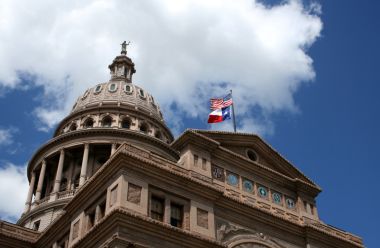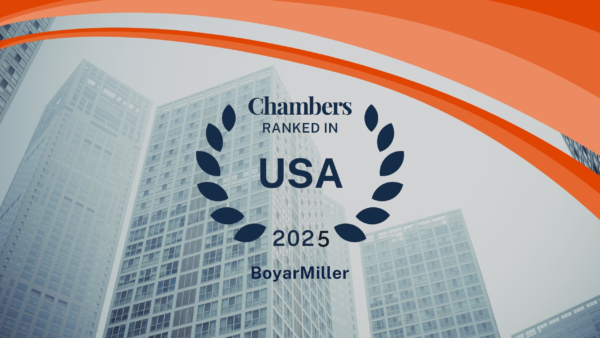With a deep understanding of your business alongside clear and honest communication, we help clients face challenges fearlessly.
Contact us today to learn more about our services and how we can help drive solutions.
UPDATE: Please Forgive Me! Loan Deferment and Loan Forgiveness Under The Paycheck Protection Program
July 6, 2020
UPDATE: The Flexibility Act was enacted on June 5, 2020, and it modified several aspects of the PPP relevant to this viewpoint. You can find these updates and clarifications at the bottom of the article.
There are two unique aspects of the Coronavirus Aid, Relief, and Economic Stimulus Act, or the CARES Act, which make loans obtained under the new Paycheck Protection Program (“PPP”) much more appealing to eligible businesses than other available stimulus or conventional loans. They are loan deferment and loan forgiveness.
Loan Deferment
The CARES Act mandates that lenders provide complete payment deferral, which includes deferral of all principal and interest, for all impacted borrowers for a period of not less than 6 months, but not more than 1 year. In the Interim Final Rule published April 3, 2020, the SBA announced that the period of deferral will be 6 months, but interest will accrue during this deferment period. To ensure that all impacted borrowers receive the benefit of loan deferral for at least 6 months, the SBA is required to purchase any loans sold on the secondary market to a purchaser that refuses to approve a deferral request.
Loan Forgiveness
Under the terms of the CARES Act and as clarified in the SBA’s Interim Final Rule, the full amount of a PPP loan, including accrued interest, may be forgiven, and any amount that is forgiven will not be included in the gross income of the borrower for federal income tax purposes. The amount that can be forgiven is the sum of the following costs incurred during the first 8-week period following the date on which funds are disbursed to the borrower:
- Payroll costs (which can include payment of additional wages to tipped employees, which are employees that receive more than $30 per month in tips)
- Interest on mortgage payments, as long as the mortgage was in place prior to February 15, 2020
- Rent, as long as the lease was in force prior to February 15, 2020
- Utilities, including electricity, gas, water, transportation, telephone, and internet, that were in service prior to February 15, 2020
There are, however, certain limitations and possible reductions on the amount of a loan that can be forgiven. As can be expected, the amount forgiven cannot be more than the principal of the loan, and in line with the requirement that 75% of the proceeds from a PPP loan must be used for payroll costs, the SBA has confirmed that not more than 25% of the loan forgiveness amount may be attributable to non-payroll costs. Additionally, the CARES Act implements certain forgiveness reduction penalties, which reduce the amount of loan forgiveness in the event an employer reduces the number of employees or reduces the salary or wages paid to employees.
- Reduction of Employees: The loan forgiveness amount will be reduced proportionately by any reduction in full-time equivalent employees during the 8-week period beginning on the date of the loan (i.e., the average number of FTEs per month during such covered period) divided by the borrower’s choice of (i) the average number of FTEs between February 15, 2019, and June 30, 2019, or (ii) the average number of FTEs between January 1, 2020, and February 29, 2020. Seasonal employers divide the number of FTEs during the 8-week period beginning on the date of the loan by the average number of FTEs employed from February 15, 2019, to June 30, 2019.
- Reduction in Wages: The loan forgiveness amount will be reduced by any reduction in total salary or wages during the 8-week period after the date of the loan in excess of 25% of the employee’s salary or wages during the employee’s most recent full quarter of employment before the loan was given. For purposes of this section, employee does not include an employee who received salary or wages in 2019 of more than $100,000. It is important to note that the language of this section of the CARES Act is extremely confusing. We hope to have further guidance explaining the mechanics of this reduction soon.
To encourage employers not to lay off employees or reduce wages or salaries and therefore, not face the above reduction penalties, the CARES Act includes a provision giving relief to employers who rehire or reinstate wages and salaries before June 30, 2020.
The process for achieving loan forgiveness has not been clearly set forth by the SBA; however, we know that a borrower must request loan forgiveness from the lender and must submit documentation supporting such forgiveness request, including a certification that the requested forgiveness amount was used for qualifying expenses. We also know that a lender will only have sixty (60) days to approve the application for loan forgiveness.
UPDATES and CLARIFICATIONS:
The Flexibility Act was enacted on June 5, 2020, and it modified several aspects of the PPP relevant to this viewpoint:
Loan Deferment:
Instead of a flat 6-month period of deferral of all payments under PPP loans for all borrowers, the Flexibility Act modifies the deferral period for the payment of principal, interest, and fees under a PPP loan such that it will now end on the date that the forgiveness amount awarded such borrower is paid to the lender by the Small Business Administration; however, if the borrower fails to apply for forgiveness of a covered loan within 10 months after the earlier of (1) the last day of the 24-week period after disbursement of PPP loan proceeds or (2) December 31, 2020, then the deferral period shall end and payments of principal, interest and fees shall begin at that point. This adds an incentive to borrowers to apply for forgiveness prior to the tenth month anniversary after the end of the covered period so as to prolong the deferral period until such time as the SBA remits the loan forgiveness amount to the lender (or notifies the lender that no loan forgiveness is allowed). This modification to the CARES Act is applicable as if it had been written in the CARES Act on March 27, 2020, which means that borrowers will not need to amend their underlying loan documents which currently may indicate only a 6-month deferral period.
Loan Forgiveness:
It is no longer a requirement that a certain amount of PPP loan proceeds be spent on payroll versus non-payroll costs. Instead, how the proceeds are spent will only affect the amount of loan forgiveness such that in order to receive maximum loan forgiveness, not less than 60% of PPP loan proceeds must be used on eligible payroll costs. Otherwise, the applicable borrower’s requested forgiveness amount will be proportionally reduced by the proportion by which the borrower failed to meet such percentage requirement. For example, if a borrower has a $100,000 PPP loan and uses 46% on non-payroll costs and 54% on payroll costs during the covered period, then the borrower’s forgiven amount will be reduced by ten percent (10%) to $90,000 (the percentage by which the borrower failed to meet the 60% use requirement – [6% / 60% = 10%]).
To encourage employers to restore their workforce and wages or salaries to their pre-COVID-19 levels, the CARES Act includes a provision giving relief from forgiveness reduction penalties to employers who rehire or reinstate wages and salaries on or before December 31, 2020, instead of on or before June 30, 2020.
For a more extensive list of all amendments made by the Flexibility Act, please read our article entitled “SBA Loosens Up and Passes Flexibility Act” HERE.
Please visit boyarmiller.com to receive updates based on any guidance issued by the SBA related to loan deferment and loan forgiveness and to stay up-to-date with other COVID-19 news.



